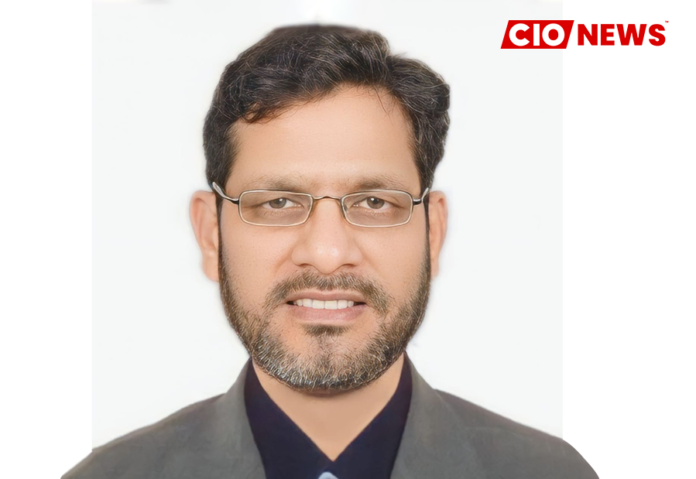Ensure the ethical use of technology, especially when implementing advanced technologies.
This is an exclusive interview series conducted by the Editor Team of CIO News with Abdullah Saleem, Group CIO at Omni Hospitals.
How did you plan your career path to be a successful Technology Leader?
Being a successful technology leader is a key leadership role responsible for managing and implementing technology strategies within an organization. Planning a successful career path as a CIO involves a combination of education, experience, skill development, networking, and strategic decision-making. A successful career path involves a combination of technical expertise, leadership skills, strategic vision, and a commitment to continuous learning. Flexibility and adaptability in the face of technological evolution are key traits for successful tech leaders.
What challenges you faced in your career path and how did you overcome them?
I have faced various challenges in my career path, ranging from technological advancements to organizational dynamics. A few common challenges are budget constraints, rapid technological changes, balancing innovation and operational stability, increasing frequency and sophistication of cyber threats, data management and privacy, aligning IT with business objectives, adoption, and change management.
Overcoming these challenges requires a combination of strategic planning, effective leadership, ongoing education, and the ability to adapt to change. As a CIO who can navigate these challenges successfully, I contribute significantly to the overall success and competitiveness of organizations.
What are the challenges faced by Technology Leaders today while implementing digital technologies?
Technology leaders in hospitals face various challenges when implementing digital technologies. These challenges stem from the complex nature of healthcare environments, the need for compliance with regulations, and the critical importance of patient care. Here, I would like to detail out one challenge called “Resistance to Change” from the users, whereby users in hospitals resist adopting new technologies due to concern about disruption to workflows or unfamiliarity and fear, which could be hindering the implementation of new applications.
To come out of this situation, it is better to involve stakeholders early in the decision-making process, identify owners, provide comprehensive training, and communicate the benefits of new technologies to address concerns including the career path of the user, the “value of being digital as an individual,” and how the patient could benefit in terms of having a better TAT of service delivery and better patient engagement towards continuity of care.
How can Technology Leaders overcome the challenges faced?
By taking a strategic, collaborative, and adaptable approach, tech leaders can effectively overcome challenges and lead successful digital transformations in healthcare settings. It requires a combination of technical expertise, effective communication, and a commitment to continuous improvement.
Any best practices/industry trends/advice you would like to suggest to fellow Technology Leaders for their successful professional journeys?
It is very simple to implement and adopt the concept of PPT (people, process, and technology) methodology from the day one of the project kick-off; otherwise, any projects towards the digital transformation or clinical transformation “WILL” not be succeeded as expected by the organization to meet the ultimate business goal.
People and processes account for 70% of the project’s burden, whereas technology accounts for just 30%. In other words, organizations should be driven based on people and processes instead of emphasizing technology, which could lead to a measurable failure of the project. No matter how costly technology is, if the right people and the right process are not in place, this costly technology adoption will not be working at any cost. The PPT is a must to incorporate during the strategy and collaboration by the technology leaders of the organization.
Any other points which you would like to highlight?
Certainly! In addition to what was mentioned earlier, here are some additional points that technology leaders may consider:
- Be empathic, sympathetic, and compassionate with yourself first, then your team members and soundings.
- Be a mentor to your team instead of behaving as “Boss”
- Prioritize the usability and user experience of digital technologies, especially those used by healthcare professionals and patients.
- Effectively manage relationships with technology vendors to ensure alignment with organizational goals.
- Collaborate and engage in collaborative efforts within the healthcare community and broader industry to share best practices and address common challenges.
- Ensure the ethical use of technology, especially when implementing advanced technologies like artificial intelligence. AI is inbuilt in the enterprise applications stack by default at the maximum instead of being introduced as an additional
- Define and monitor metrics and KPIs to assess the impact and success of technology implementations.
- Establish innovation centres or partnerships with research institutions to stay at the forefront of emerging technologies.
- Implement educational initiatives for both staff and end-users to enhance digital literacy.
These additional considerations highlight the multifaceted role of a CIO/tech leader in leading not only the technological aspects but also ethical, strategic, and collaborative initiatives within a healthcare organization. By addressing these points, CIOs and technology leaders can contribute to the effective and responsible use of technology in healthcare delivery and beyond.
Also read: Safely Introducing Kids to AI Tools
Do Follow: CIO News LinkedIn Account | CIO News Facebook | CIO News Youtube | CIO News Twitter
About us:
CIO News, a proprietary of Mercadeo, produces award-winning content and resources for IT leaders across any industry through print articles and recorded video interviews on topics in the technology sector such as Digital Transformation, Artificial Intelligence (AI), Machine Learning (ML), Cloud, Robotics, Cyber-security, Data, Analytics, SOC, SASE, among other technology topics.






